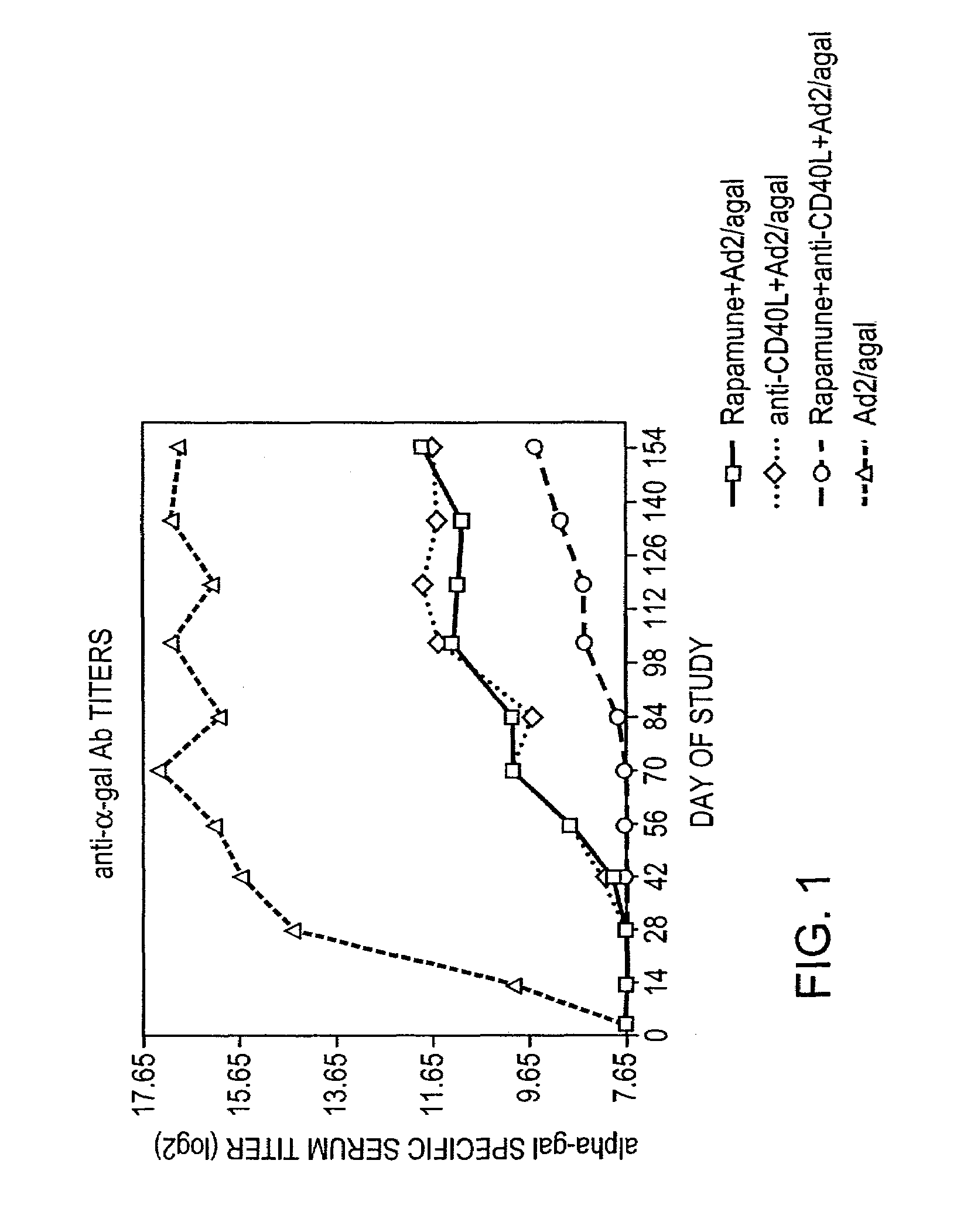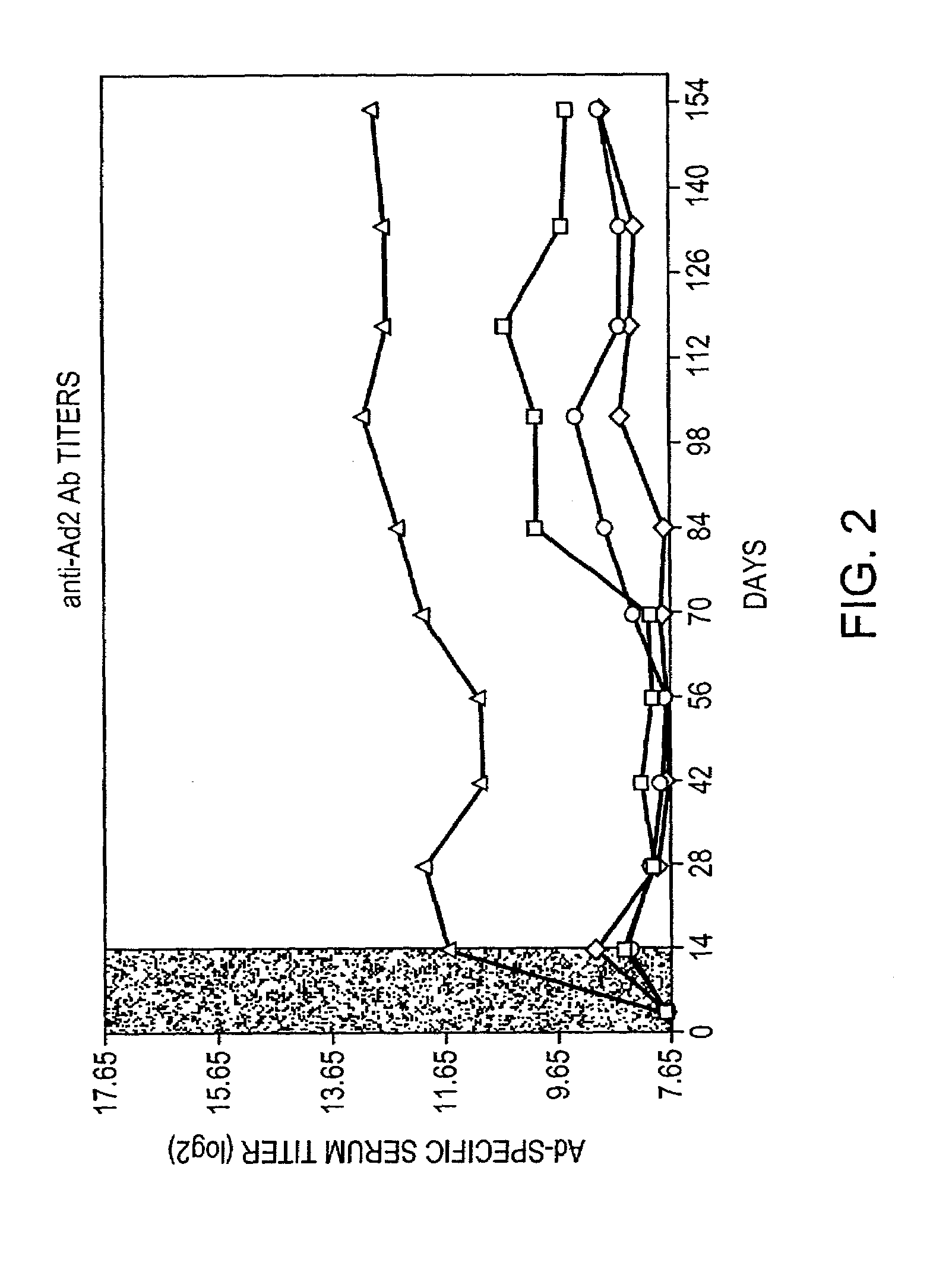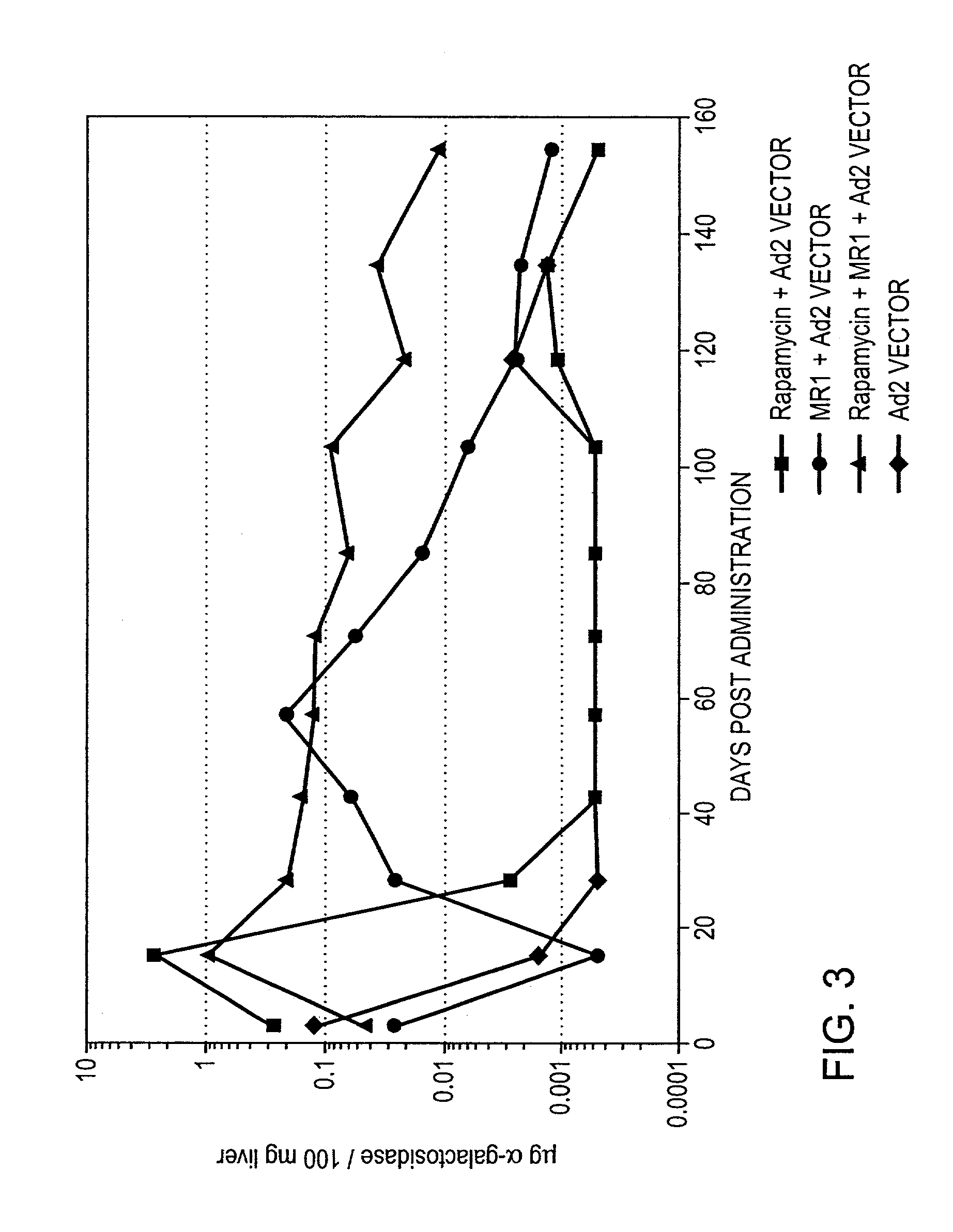Use of rapamycin to inhibit immune response and induce tolerance to gene therapy vector and encoded transgene products
a technology of rapamycin and immune response, which is applied in the direction of drug composition, peptide/protein ingredient, immunological disorders, etc., can solve the problems of many immunosuppressant molecules not being effective for gene therapy purposes, and the inhibition of secondary gene transfer via repeat administration of vectors is not sufficient, so as to inhibit the immune response and inhibit the secondary immune response
- Summary
- Abstract
- Description
- Claims
- Application Information
AI Technical Summary
Benefits of technology
Problems solved by technology
Method used
Image
Examples
Embodiment Construction
[0010]Rapamycin is a natural product derived from a soil microorganism, which was originally described as an antibiotic and subsequently found to possess some immunosuppressive properties. Rapamycin has recently been approved for use in patients for kidney transplantation in combination with cyclosporine and corticosteroids. Recent reports in the literature claim that rapamycin in combination with co-stimulation blockade can induce tolerance to allografts in mice.
[0011]The present invention provides for transient co-administration of rapamycin or an analog or derivative thereof, together with a gene therapy vector encoding a transgene. The present invention is directed to inhibiting the immune response of a host to the administered gene therapy vector and encoded transgene product, thus allowing persistent transgene expression and repeated administration of the gene therapy product to the host. The present invention is also of relevance in genetic disease patients that mount immune ...
PUM
| Property | Measurement | Unit |
|---|---|---|
| weight | aaaaa | aaaaa |
| amphiphilic | aaaaa | aaaaa |
| antibody titers | aaaaa | aaaaa |
Abstract
Description
Claims
Application Information
 Login to View More
Login to View More - R&D
- Intellectual Property
- Life Sciences
- Materials
- Tech Scout
- Unparalleled Data Quality
- Higher Quality Content
- 60% Fewer Hallucinations
Browse by: Latest US Patents, China's latest patents, Technical Efficacy Thesaurus, Application Domain, Technology Topic, Popular Technical Reports.
© 2025 PatSnap. All rights reserved.Legal|Privacy policy|Modern Slavery Act Transparency Statement|Sitemap|About US| Contact US: help@patsnap.com



